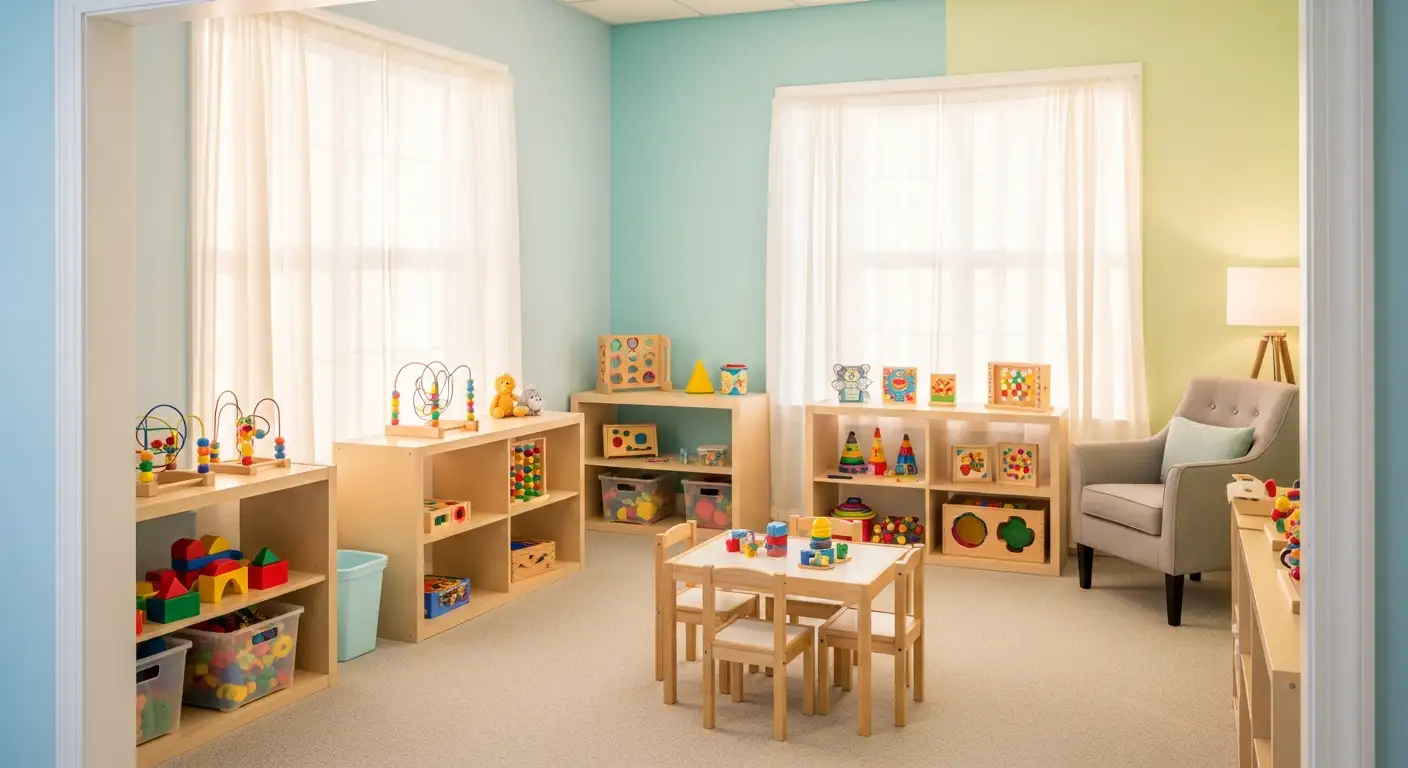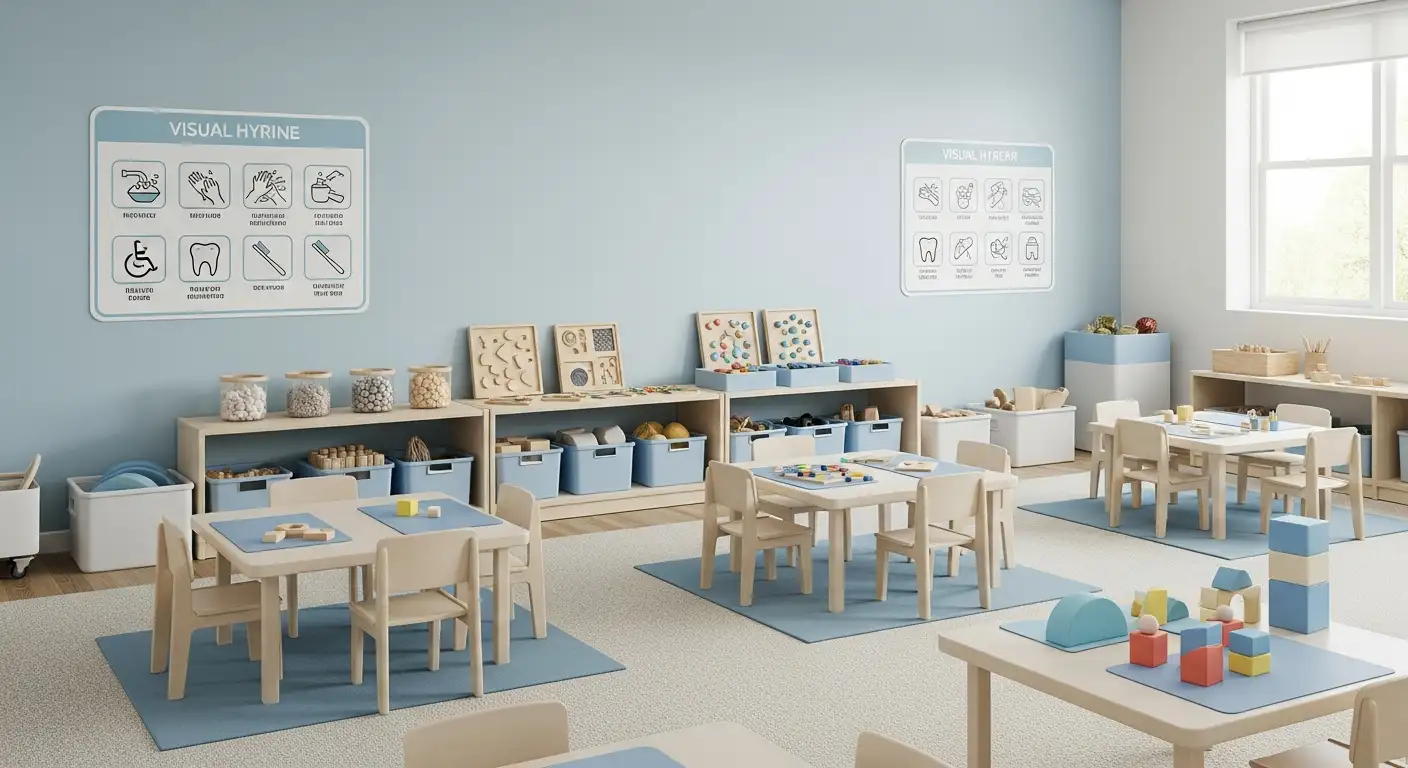Social Communication Disorder vs. Autism
Deciphering the Differences and Overlaps Between Social Communication Disorder and Autism Spectrum Disorder

Understanding the Distinctions in Clinical Practice
Social Communication Disorder (SCD) and Autism Spectrum Disorder (ASD) are two neurodevelopmental conditions that, while sharing some communication-related features, are fundamentally different in diagnostic criteria and clinical presentation. Recognizing these differences is critical for accurate diagnosis, targeted interventions, and supporting affected individuals in achieving their social and communicative potential.
Overview of Social Communication Disorder (SCD)
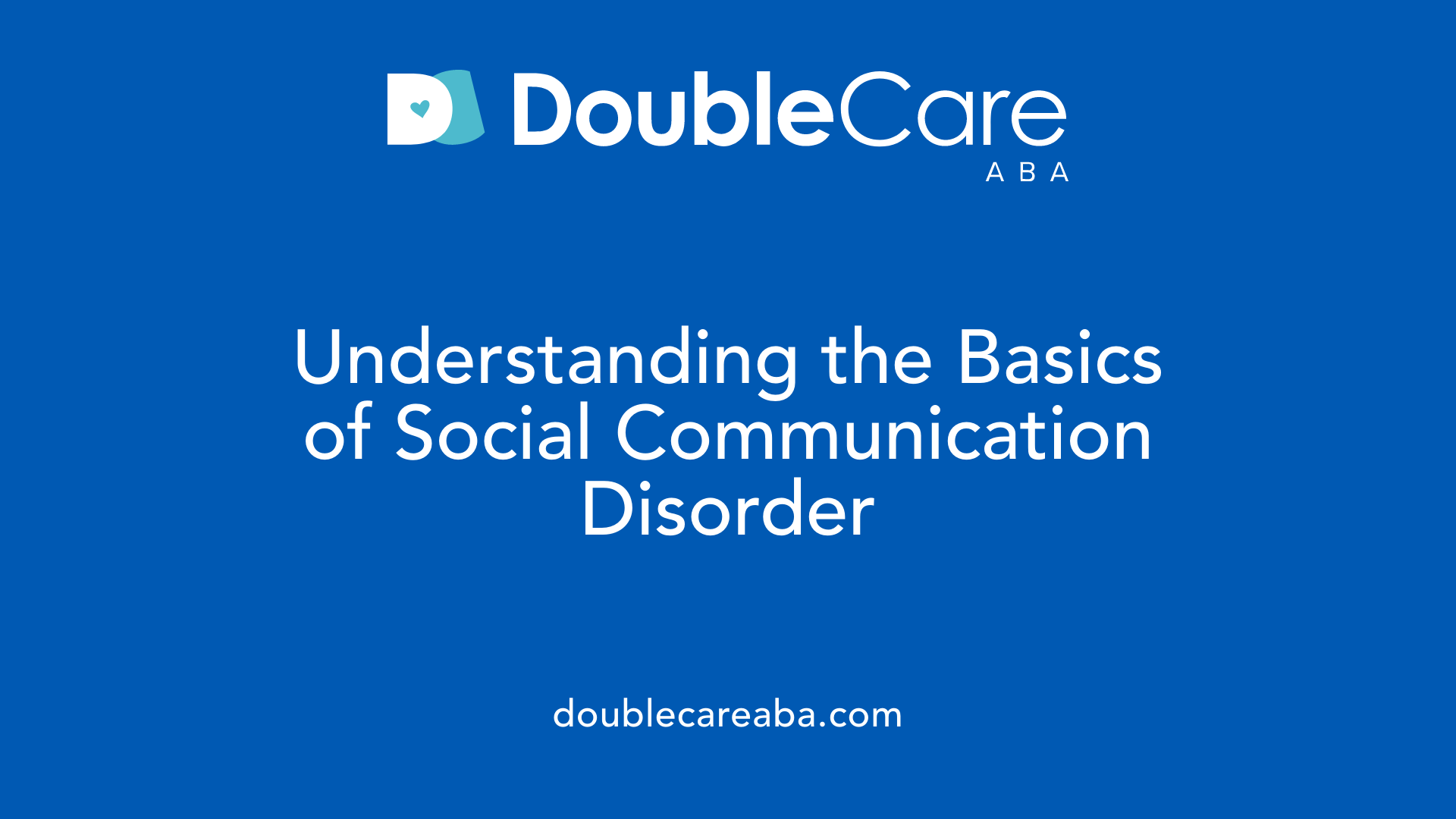
What is Social Communication Disorder?
Social Communication Disorder (SCD) is a condition characterized by persistent challenges in using verbal and nonverbal communication skills for social purposes. Recognized as a distinct diagnosis in the DSM-5 since 2013, SCD affects how individuals engage in social interactions across various settings. Unlike autism spectrum disorder (ASD), SCD does not involve restricted or repetitive behaviors, but it significantly impacts everyday social functioning.
Core Symptoms of SCD
The core symptoms of SCD include ongoing difficulties in understanding and employing social language appropriately. Individuals often struggle with greetings, sharing information, storytelling, and interpreting social cues like body language, facial expressions, and tone of voice. They may find it hard to adapt their speech to suit different situations or understand implied or figurative language like sarcasm or idioms.
Common behaviors linked to these challenges are poor eye contact, inappropriate gestures, interrupting conversations, staying off-topic, and providing minimal responses. These individuals might also show low interest in social interactions, making it difficult to develop or maintain friendships. Their communication may appear awkward or disinterested, which can hinder social participation and emotional connection.
Developmental and Diagnostic Features
Typically, signs of SCD are evident from early childhood, such as delays in language development and difficulties in engaging with peers. For diagnosis, comprehensive assessments are essential. These include interviews, direct observations, standardized tests focusing on pragmatic language skills, and feedback from parents and teachers.
Diagnosis requires ruling out other conditions like ASD, especially since children with ASD exhibit additional features such as restricted and repetitive behaviors. Importantly, SCD can occur independently and may coexist with other developmental issues, including language impairment or attention-deficit/hyperactivity disorder (ADHD). Age of diagnosis usually falls between four and five years old, once language skills are sufficiently developed for assessment.
Interventions primarily involve speech-language therapy targeting social language use, pragmatic skills, and social interactions. With appropriate support, individuals with SCD can improve their communication abilities, enhance social participation, and build stronger relationships.
Characteristics and Diagnostic Criteria of SCD
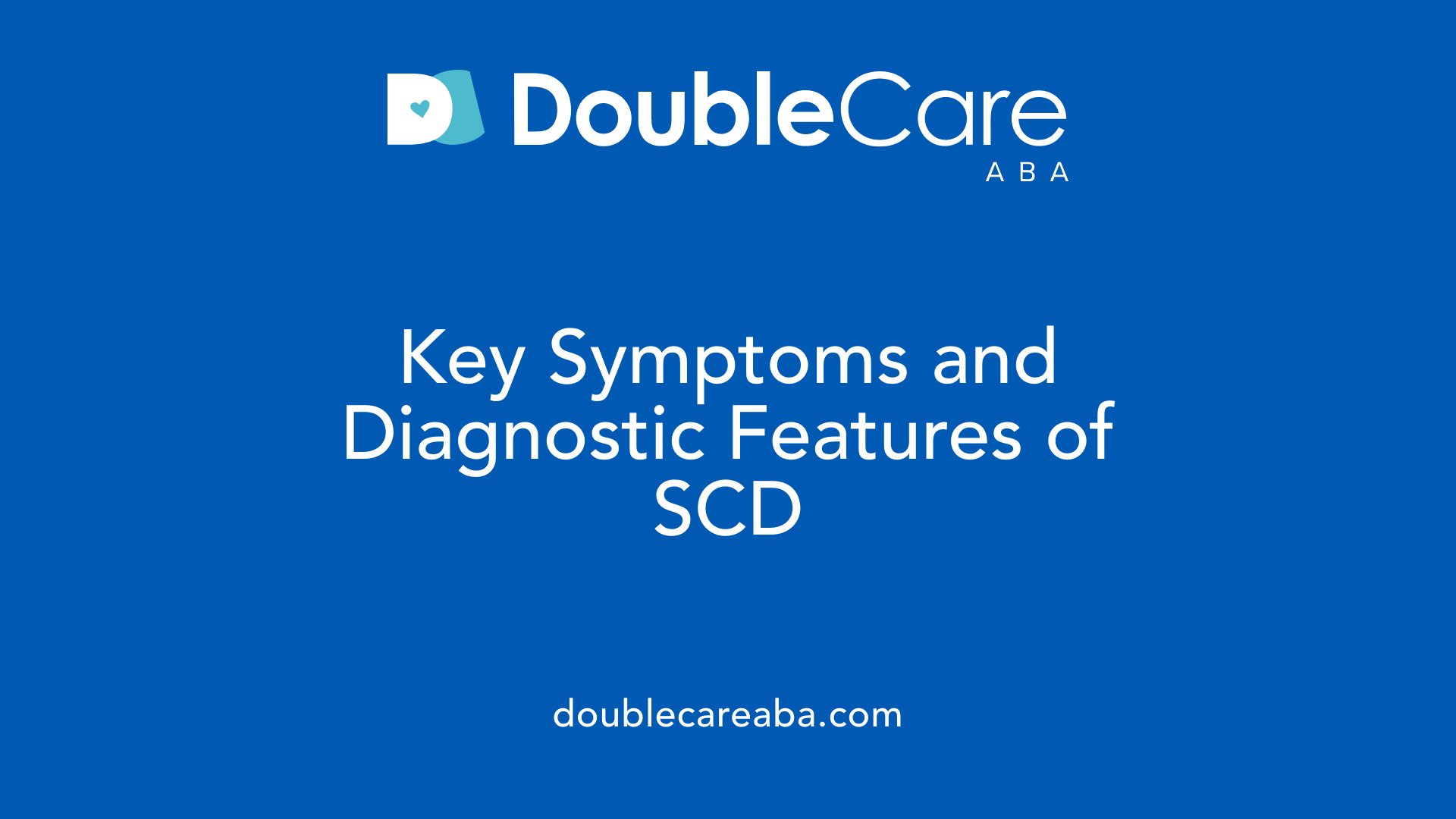
Symptoms and signs in children and adults
Children with Social Communication Disorder (SCD) often exhibit difficulty in understanding social cues, such as facial expressions and tone of voice. They may struggle to respond appropriately in conversations, have trouble taking turns, and misunderstand social intentions. These challenges persist into adulthood, affecting friendships, work interactions, and social participation.
In both children and adults, common signs include giving excessive or disorganized information during conversations, difficulty staying on topic, and problems interpreting idiomatic expressions, sarcasm, or humor. They may also stand too close or have trouble using gestures relevant to social communication.
Age of diagnosis and early signs
SCD is typically diagnosed around ages four or five, once children have developed sufficient language skills. Early signs can include delays in achieving language milestones, low interest in social interactions, and difficulty engaging in reciprocal communication. For toddlers, difficulties may appear in taking turns or using gestures that convey intentions.
Early detection is critical because these signs can be subtle and often mistaken for other language or behavioral issues. Recognizing early deficits in pragmatics can lead to timely intervention, improving social functioning later.
Assessment methods and tools
Diagnosing SCD involves comprehensive assessments carried out by speech-language pathologists and psychologists. These evaluations include structured interviews with parents, teachers, and the individual, direct observation of social interactions, and standardized tests that measure pragmatic language skills.
Tools such as conversation analysis, pragmatic judgment tests, and social skills observations are used to identify specific deficits. Medical evaluations may also rule out hearing impairments or other developmental disorders. Since assessment tools are still evolving, clinical judgment remains central.
Relationship with other disorders
SCD often occurs independently but may co-occur with conditions like language impairments, ADHD, learning disabilities, or behavioral challenges. Importantly, SCD is distinguished from Autism Spectrum Disorder (ASD) primarily by the absence of restricted and repetitive behaviors.
In some cases, children previously diagnosed with Pervasive Developmental Disorder-Not Otherwise Specified (PDD-NOS) are now classified as having SCD. Accurate diagnosis requires ruling out ASD, especially since both conditions involve social communication difficulties.
| Aspect | SCD Characteristics | ASD Characteristics | Additional Notes |
|---|---|---|---|
| Core features | Social communication deficits | Social deficits + RRBs | RRBs include hand-flapping, routines, sensitivities |
| Presence of RRBs | Not present | Present | RRBs help differentiate SCD from ASD |
| Language development | Often intact but pragmatically impaired | Varied, often delayed | Early language delay common in both but differs pragmatically |
| Sensory sensitivities | Uncommon | Common | Sensory issues are more characteristic of ASD |
| Diagnostic criteria | Pragmatic deficits without RRBs | Social deficits + RRBs | Diagnostics rely on clinical assessment |
Understanding the distinctions helps ensure accurate diagnosis and appropriate intervention, facilitating better social outcomes for individuals with SCD.
The Role of ASD in Differential Diagnosis

How are social communication disorder and autism diagnosed and distinguished from each other?
Social Communication Disorder (SCD) and Autism Spectrum Disorder (ASD) share overlapping challenges in social communication, but they are distinct diagnoses with important differences.
A primary distinguishing feature is the presence or absence of restricted and repetitive behaviors (RRBs). Individuals with ASD typically exhibit behaviors such as hand flapping, rocking, lining up toys, and insistence on routines. They often have sensory sensitivities to sights, sounds, or touch. These behaviors are not seen in SCD, which solely involves difficulties in using language effectively for social purposes.
Diagnostic assessment involves a comprehensive evaluation by qualified professionals. This includes developmental history, behavioral observation, and standardized assessment tools.
For SCD, assessments focus on persistent social communication challenges such as trouble sharing thoughts, interpreting social cues, engaging in reciprocal conversations, and understanding non-literal language—all without the RRBs characteristic of autism.
The DSM-5 criteria specify that SCD can only be diagnosed when these social communication difficulties are the main issue and are not better explained by other developmental disorders or autism.
Proper differentiation is crucial because it determines tailored interventions. For instance, speech and social skills training benefit children with SCD, while autism may require additional behavioral therapies targeting RRBs. Accurate diagnosis depends on thorough, professional assessment considering developmental history, observed behaviors, and specific features of each condition.
In summary, while both disorders involve social communication issues, the key differentiator is the presence of restricted and repetitive behaviors in ASD, making detailed assessment essential for accurate diagnosis and appropriate intervention.
Emerging Research and Neurobiological Perspectives
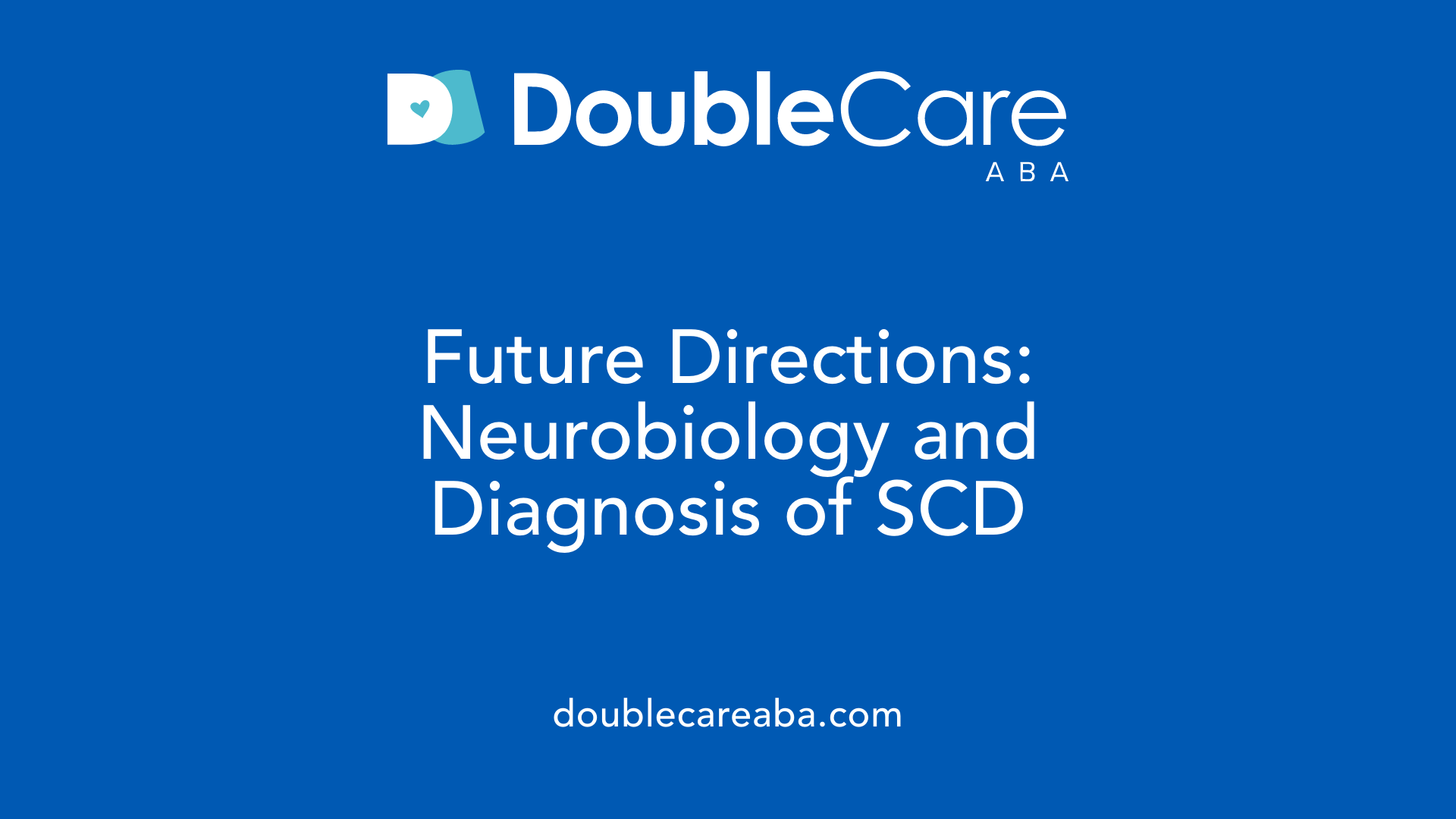
Can social communication disorder occur without autism, and how is it distinguished?
Social Communication Disorder (SCD) can indeed occur independently of autism spectrum disorder (ASD). It is primarily characterized by persistent challenges in using verbal and nonverbal language effectively for social purposes. These challenges include difficulty understanding social cues, engaging in reciprocal conversations, using gestures appropriately, and modifying language according to social context.
The main difference between SCD and ASD lies in the presence of restricted and repetitive behaviors, sensory sensitivities, and narrow interests, which are hallmarks of autism but are not seen in SCD. Diagnosing SCD requires comprehensive assessments that confirm ongoing social communication difficulties, while also ruling out autism. This involves observations, standardized language tests, and input from caregivers or educators.
Unlike individuals with autism, those with SCD do not display behaviors such as hand flapping, excessive routines, or sensory-integration issues. This distinction helps clinicians tailor interventions more precisely, emphasizing pragmatic language skills and social understanding in SCD, and a broader support plan addressing behavioral and sensory challenges in ASD.
Interventions and Treatment Strategies
What treatment options are effective for social communication disorder?
Children diagnosed with Social Pragmatic Communication Disorder (SCD) can benefit significantly from various therapies aimed at improving their social communication skills. Speech-language therapy is a cornerstone of intervention, focusing on pragmatic language skills such as turn-taking, understanding social cues, and using language appropriately in context. Therapists may employ structured activities, social stories, and visual supports to teach social rules and enhance comprehension.
In addition to direct speech therapy, social skills development programs are vital. These often include social skills groups where children practice conversational skills, emotional recognition, and appropriate social behaviors in a supportive environment.
Peer-mediated approaches are another effective strategy. These involve training peers to interact with children with SCD, encouraging natural social interactions, and fostering inclusion. Such peer support can make socialization less intimidating and more engaging for children with SCD.
The integration of technology offers new possibilities. Computer-based social skills training programs, video modeling, and social stories—short narratives designed for specific social situations—help children understand social expectations and respond correctly. These tools also allow for repeated practice outside of therapy sessions.
Importantly, successful treatment hinges on tailoring interventions to each child's unique strengths, challenges, and social contexts. Consistent application across home, school, and community settings promotes skill generalization, increasing the likelihood of meaningful improvements in social communication.
By combining these approaches, clinicians and families can create comprehensive support systems to address the social communication challenges associated with SCD, ultimately fostering better social participation and independence.
Comparison of Therapy Approaches for SCD and ASD
What treatment and intervention approaches are available for SCD and ASD?
Treatment strategies for Social Pragmatic Communication Disorder (SCD) and Autism Spectrum Disorder (ASD) are diverse and tailored to individual needs. They aim to improve social communication, interaction skills, and overall adaptive functioning.
In ASD, evidence-based behavioral therapies are most common. For example, Applied Behavior Analysis (ABA) and Discrete Trial Training (DTT) use structured techniques to modify behaviors and teach new skills. These therapies are effective in reinforcing positive interactions, reducing problematic behaviors, and fostering communication.
Developmental and relational approaches, such as DIR/Floor Time™ and the Relationship Development Intervention (RDI), focus on promoting emotional understanding and social engagement through play and relational therapies.
Speech-language therapy is core to both conditions, targeting language development and pragmatic skills. This includes working on using gestures, understanding social cues, taking turns in conversation, and interpreting nonliteral language like idioms or humor.
Supportive tools such as social stories, video modeling, and social skills groups provide additional structures for practicing social interactions.
Assistive technologies, including augmentative and alternative communication (AAC) devices, help individuals with limited speech communicate more effectively.
While behavioral and developmental therapies form the foundation, pharmacological treatments may be used to manage co-occurring issues such as anxiety, mood disorders, or hyperactivity. Psychological supports like counseling can also address emotional concerns and improve coping skills.
Overall, effective intervention is comprehensive, combining behavioral, developmental, technological, and medical strategies customized to the person’s specific needs and strengths, thus facilitating better social integration and quality of life.
Implications for Future Research and Practice
What are the differences and similarities between Social Communication Disorder and Autism Spectrum Disorder?
Social Communication Disorder (SCD) and Autism Spectrum Disorder (ASD) share common challenges in social communication, such as difficulty interpreting social cues, engaging in reciprocal conversation, and understanding nonliteral language. However, their core differences define their statuses as distinct diagnoses.
SCD is marked by persistent impairments in social use of verbal and nonverbal communication without the presence of restricted or repetitive behaviors. In contrast, ASD includes these behavioral patterns, such as hand-flapping, lining up toys, and sensory sensitivities, alongside social communication difficulties.
While the social communication issues in both conditions can appear similar, the absence of repetitive behaviors in SCD is a critical diagnostic criterion. ASD tends to involve more severe social deficits and additional sensory and behavioral challenges. Accurate diagnosis thus hinges on identifying these additional behaviors, ensuring those with SCD are not misclassified as ASD or vice versa.
Current limitations and challenges in diagnosis
Diagnosing social pragmatic communication deficits remains complex because of overlapping symptoms and the variability of presentation among individuals. Existing assessment tools are often limited in capturing the nuanced differences, particularly in differentiating SCD from ASD, especially when comorbidities are present.
Furthermore, the current DSM-5 criteria for SCD are somewhat vague, which leads to challenges in establishing clear boundaries. High rates of comorbidity with disorders such as ADHD and speech disorders complicate the diagnostic process. These factors underscore the need for more precise, validated diagnostic assessments tailored to distinct features of SCD.
Potential neurobiological markers
Emerging research suggests that there may be neurobiological underpinnings to social pragmatic deficits. One model proposed by Catani and Bambini highlights specific white matter tracts involved in social cognition. Neuroimaging studies have identified atypical neural activity and connectivity in regions associated with social processing in individuals with ASD and, potentially, SCD.
Although definitive biological markers for SCD are still under investigation, identifying neuroanatomical or neurofunctional signatures could greatly aid diagnosis and treatment. Genetic studies also hint at overlaps between SCD and ASD, supporting the theory of social communication skills existing along a spectrum.
Directions for future studies
Future research should focus on developing reliable, standardized assessment instruments for SCD that can distinguish it clearly from ASD and other neurodevelopmental conditions. Longitudinal studies are essential to understand the developmental trajectory of SCD and its potential overlap or divergence from ASD.
Investigating neural correlates through advanced neuroimaging and genetic analysis may elucidate underlying mechanisms. Exploring these biological aspects could pave the way for targeted interventions and personalized treatment plans.
Further studies examining the effectiveness of intervention programs, including speech-language therapy and social skills training tailored specifically for SCD, are needed to establish best practices.
Improving assessment tools and intervention strategies
Enhancing assessment methods involves integrating observational data, parent and teacher reports, and dynamic testing procedures specialized for pragmatic skills. Using technology, such as virtual reality or computerized assessment platforms, could provide more ecologically valid and objective measures.
On the intervention front, expanding treatment strategies to include social cognition training, augmented communication tools, and peer-mediated approaches may improve functional outcomes. Incorporating family and community involvement remains crucial for generalizing skills outside the clinical setting.
Ongoing development of intervention programs should aim for early detection and intervention, focusing on building social understanding, pragmatic language use, and adaptive social behaviors. Collaboration among clinicians, researchers, educators, and families will be essential to refine these approaches.
| Aspect | Focus Area | Future Prospect |
|---|---|---|
| Diagnosis | Assessment tools | Development of standardized, sensitive, and specific measures |
| Neurobiology | Biological markers | Identification of neural signatures and genetic links |
| Interventions | Therapy practices | Tailoring and innovating social communication training |
| Research | Longitudinal and genetic studies | Understanding developmental patterns and underlying mechanisms |
Enhancing Understanding and Support through Accurate Diagnosis
Distinguishing between Social Communication Disorder and Autism Spectrum Disorder is vital for ensuring appropriate intervention strategies and supporting affected individuals effectively. Advances in research, neurobiological understanding, and clinical assessment tools are essential for improving diagnostic accuracy and tailoring therapies. As our understanding deepens, fostering awareness and supportive environments remains crucial to enabling individuals with these conditions to thrive socially and communicatively.
References
- Social Pragmatic Communication Disorder vs. Autism Spectrum ...
- Differences between Autism Spectrum Disorder (ASD) and Social ...
- Social Communication Disorder: Symptoms Similar to Autism
- Social (Pragmatic) Communication Disorder | Autism Speaks
- Determining when a child has social communication disorder versus ...
- Social Communication Disorder vs Autism: What's the Difference?
- Social Pragmatic Disorder vs Autism: What's the Difference?
- Autism and Social Communication




